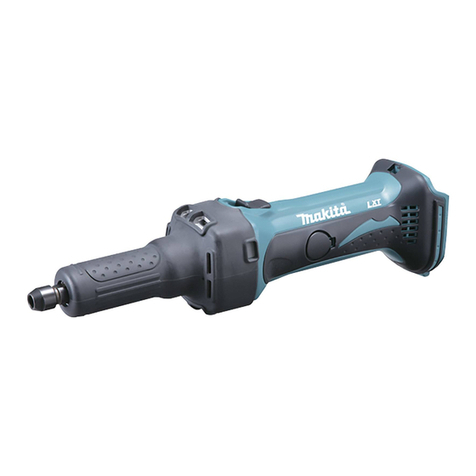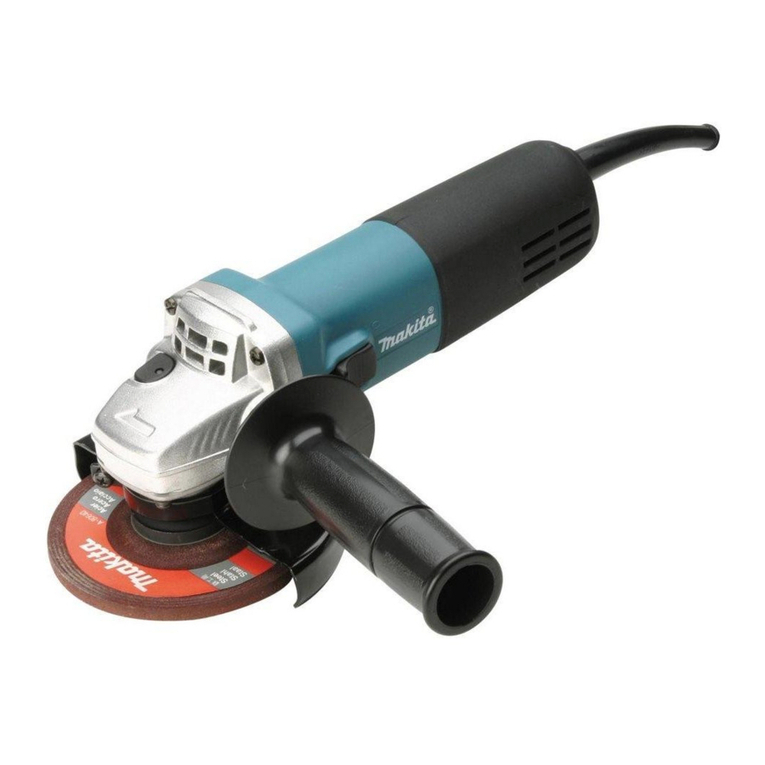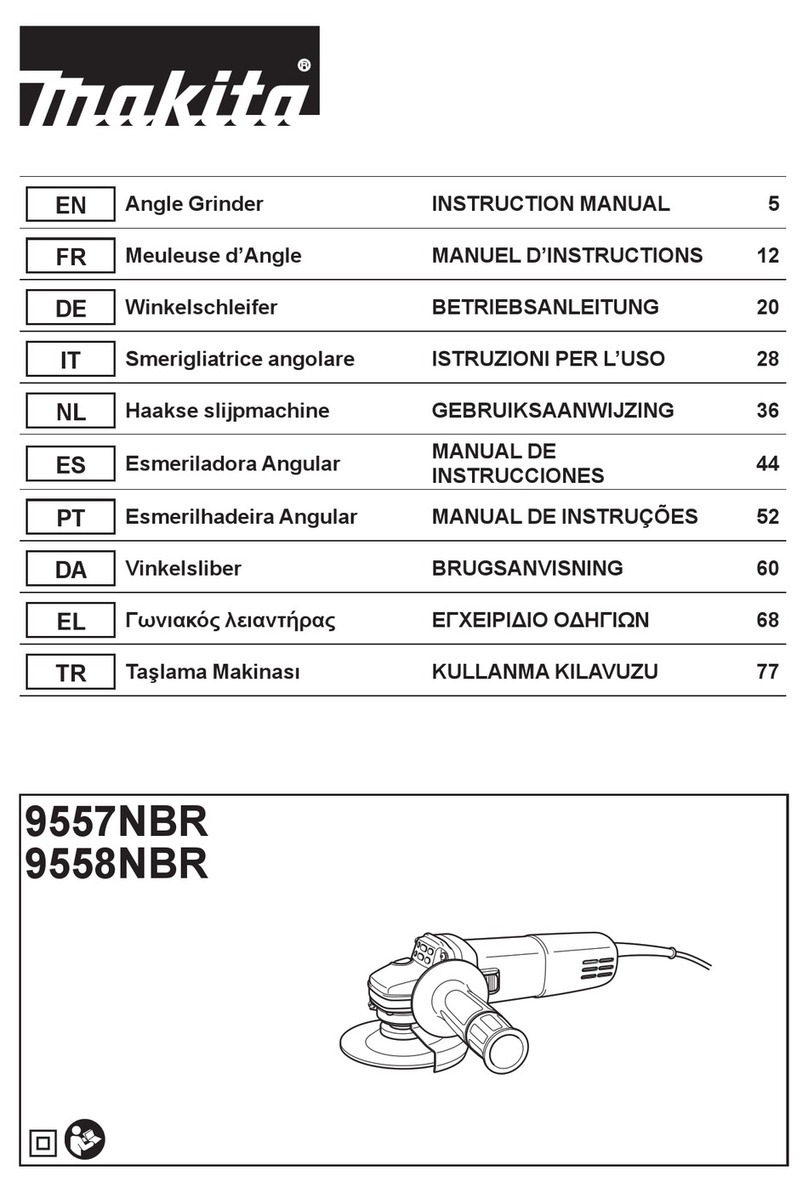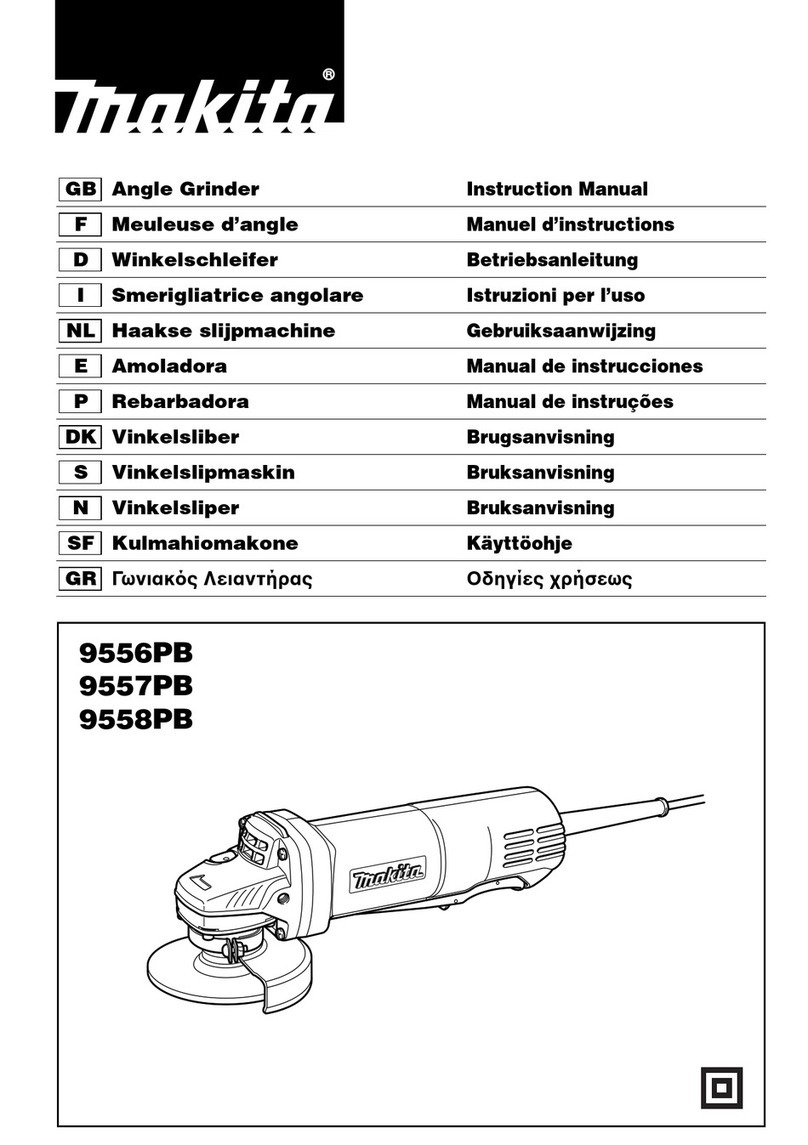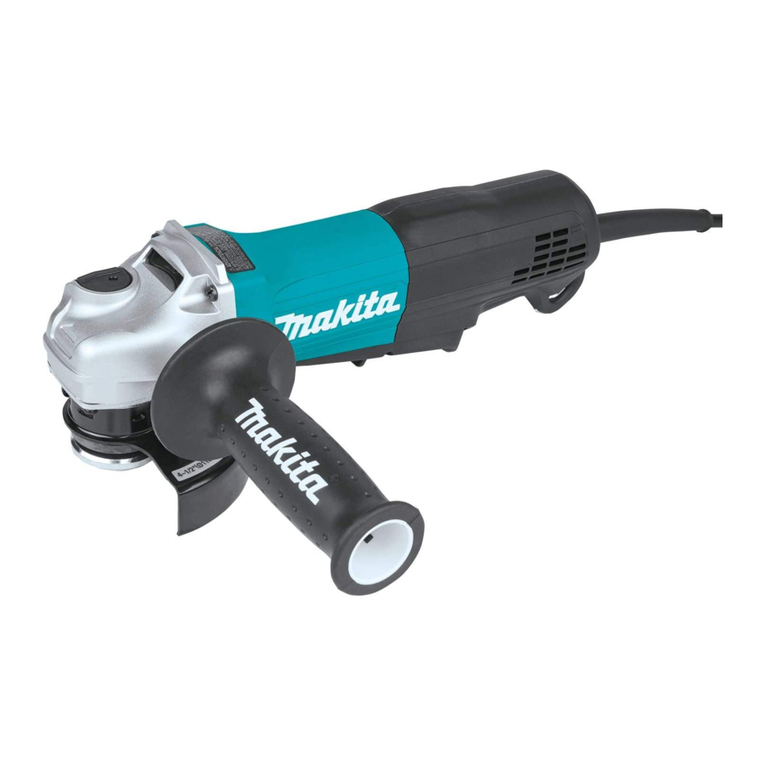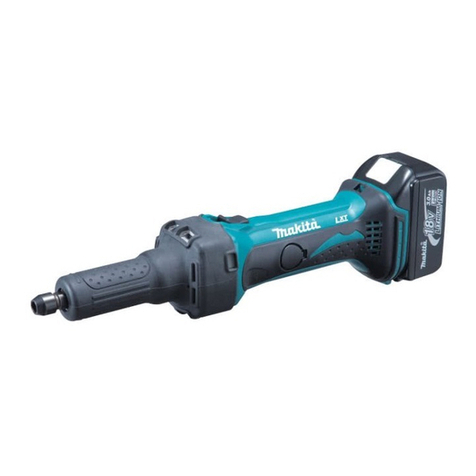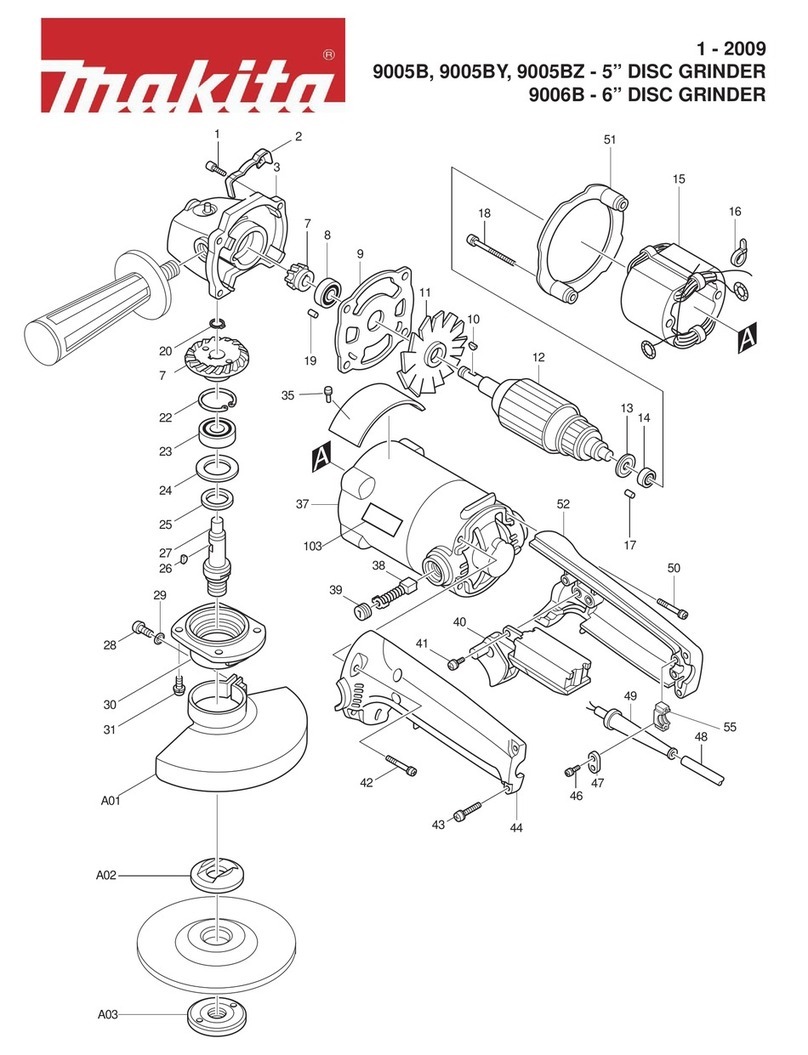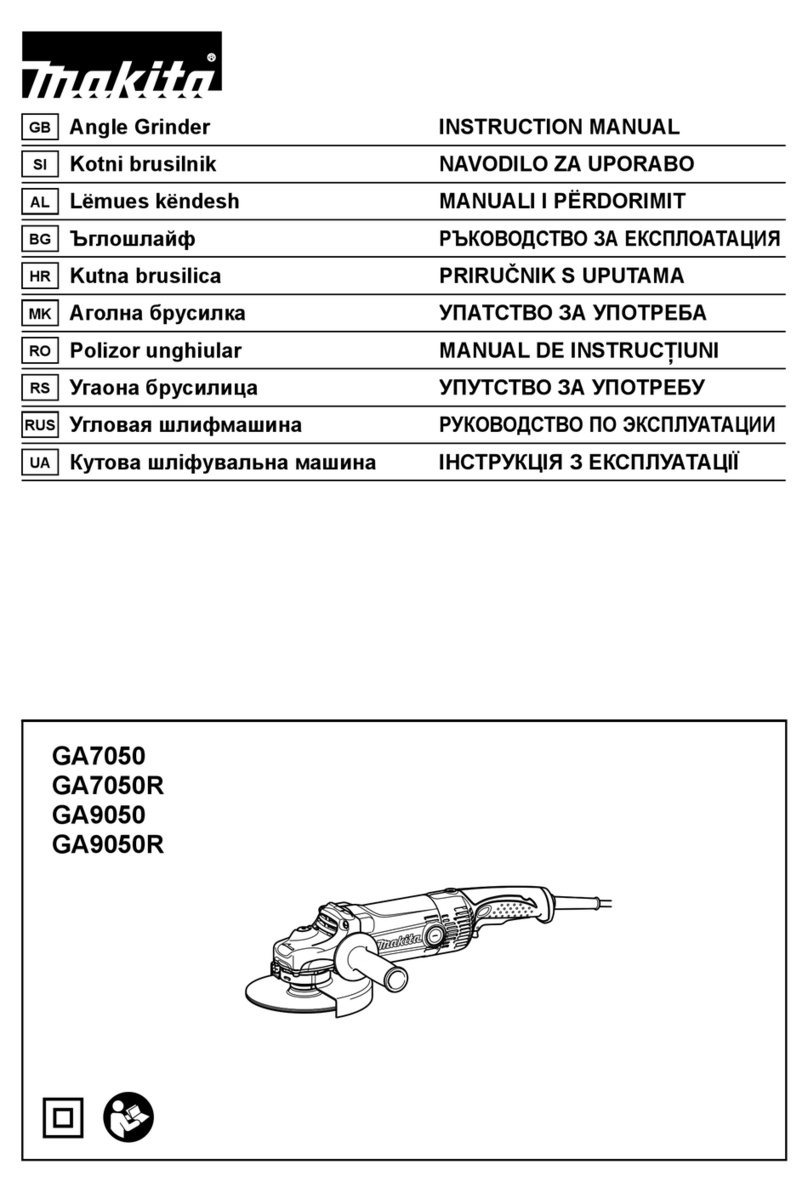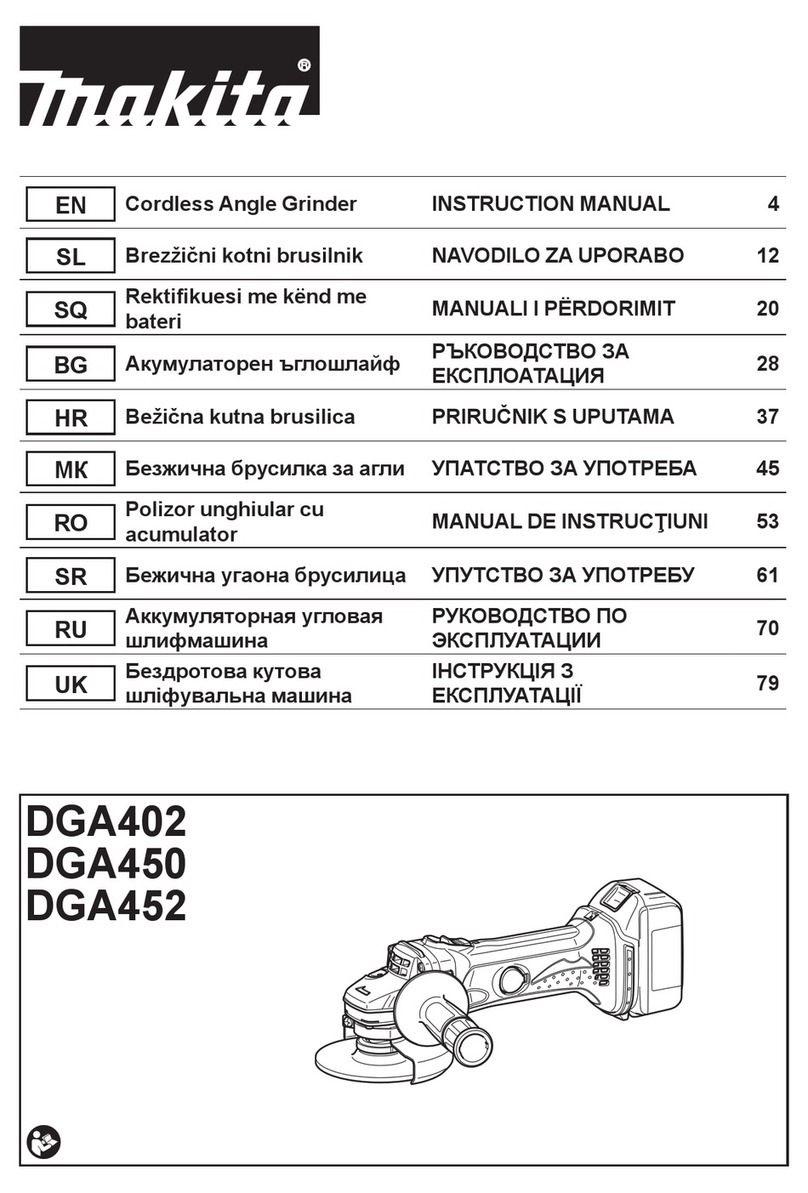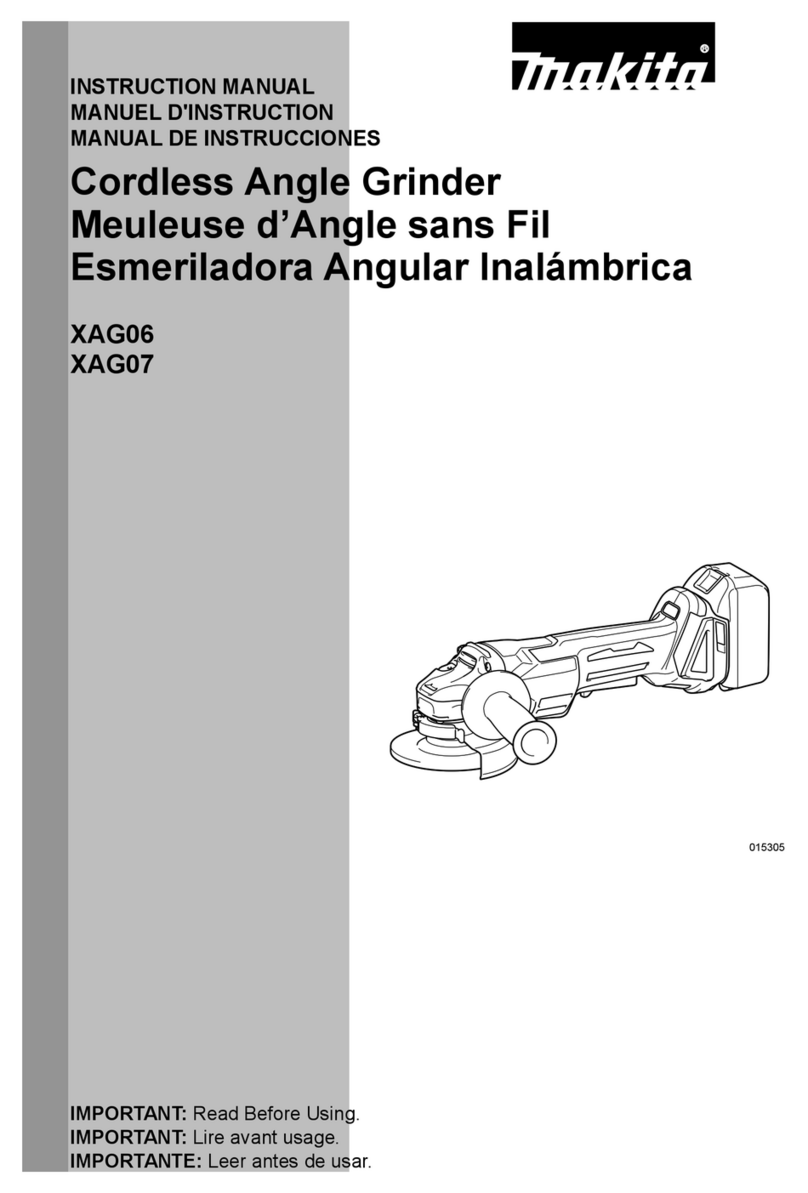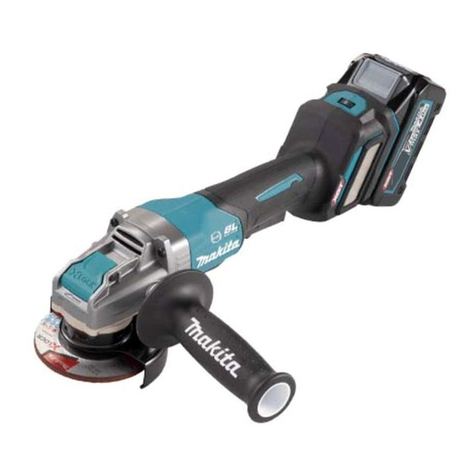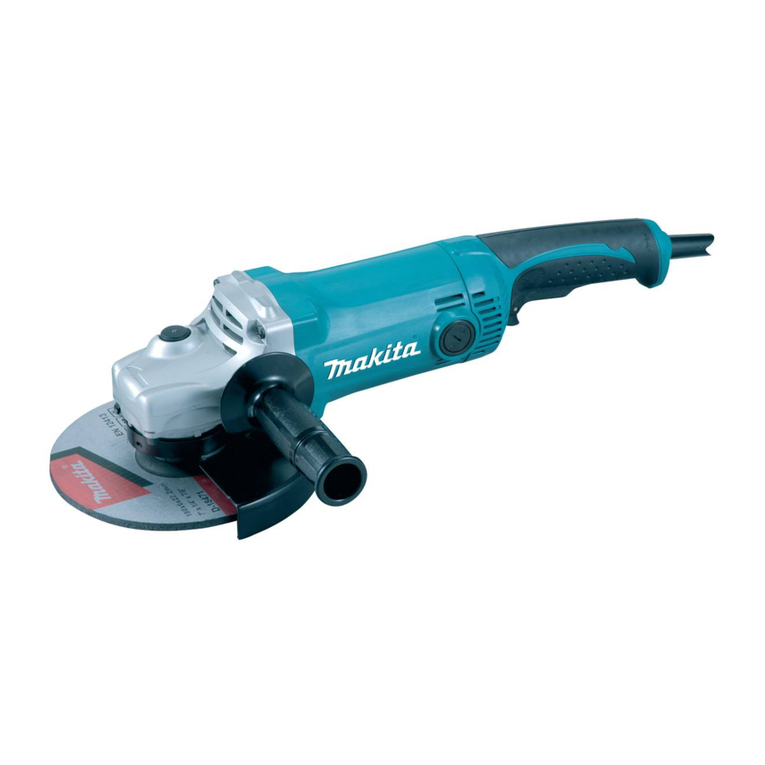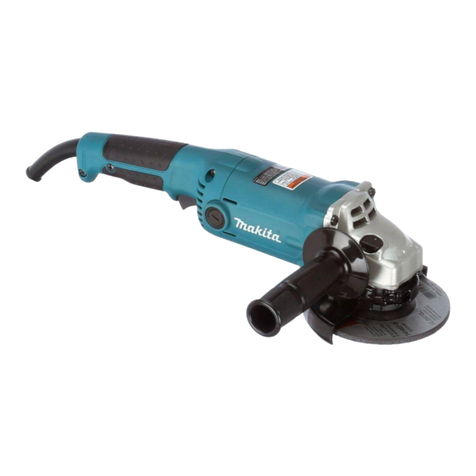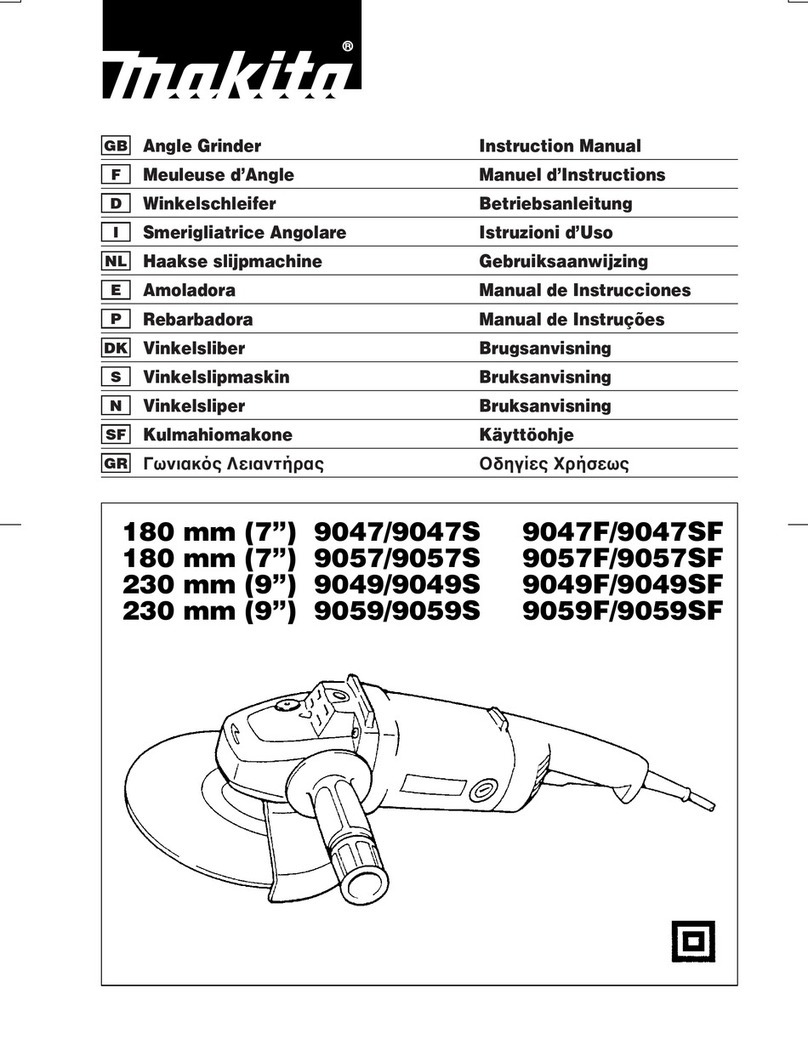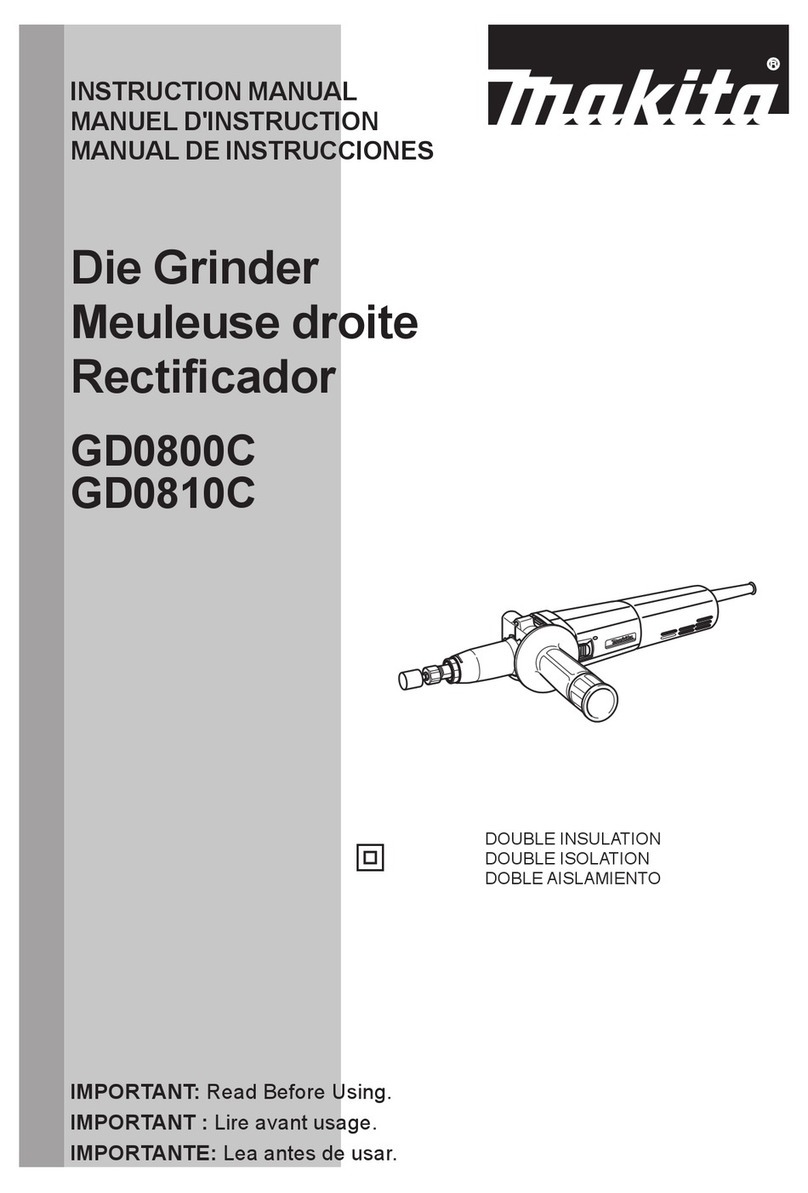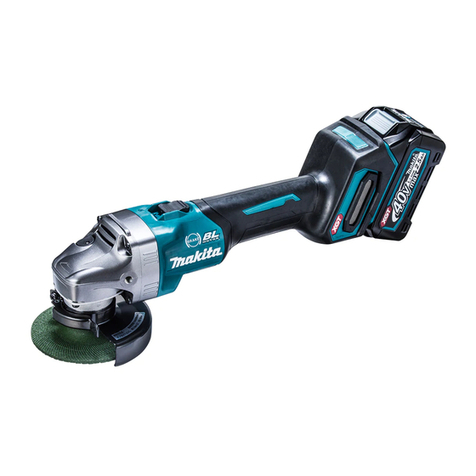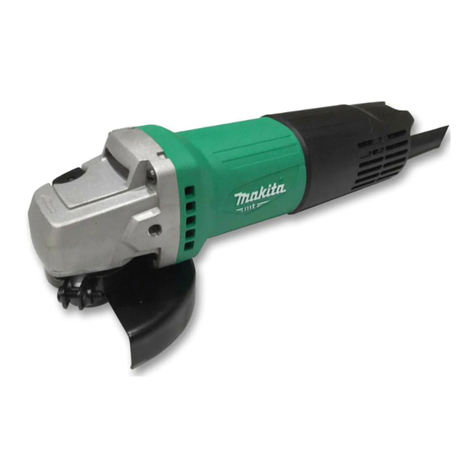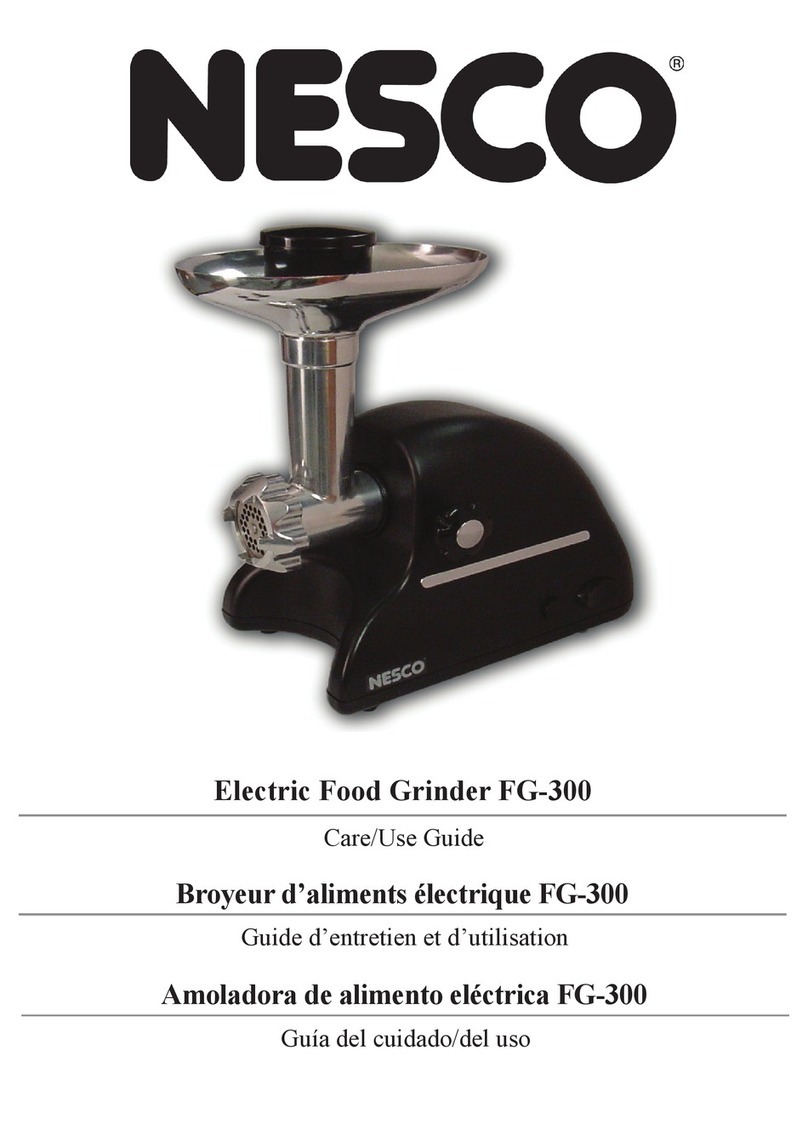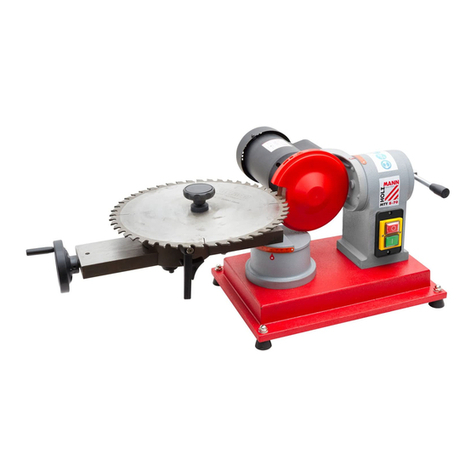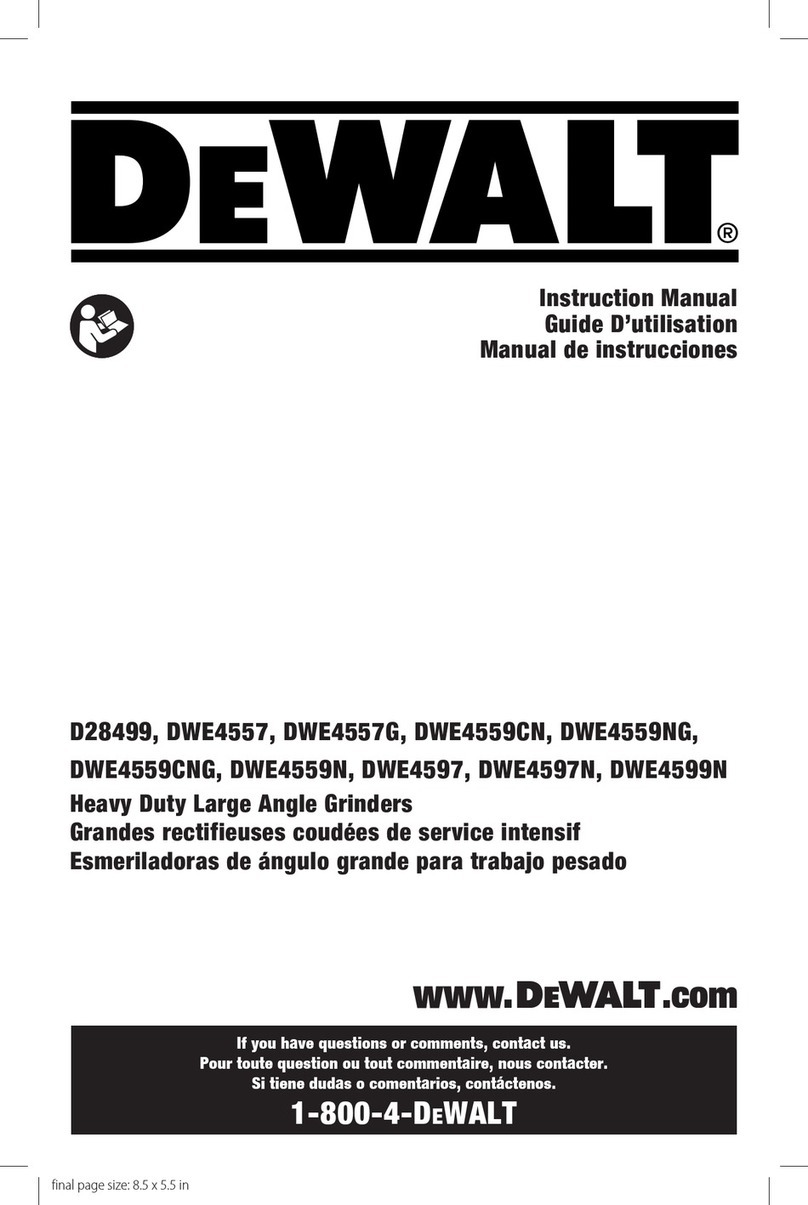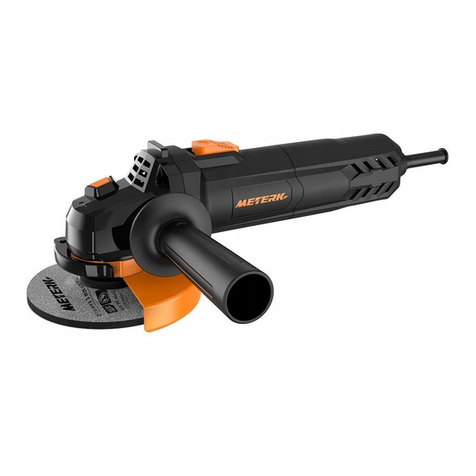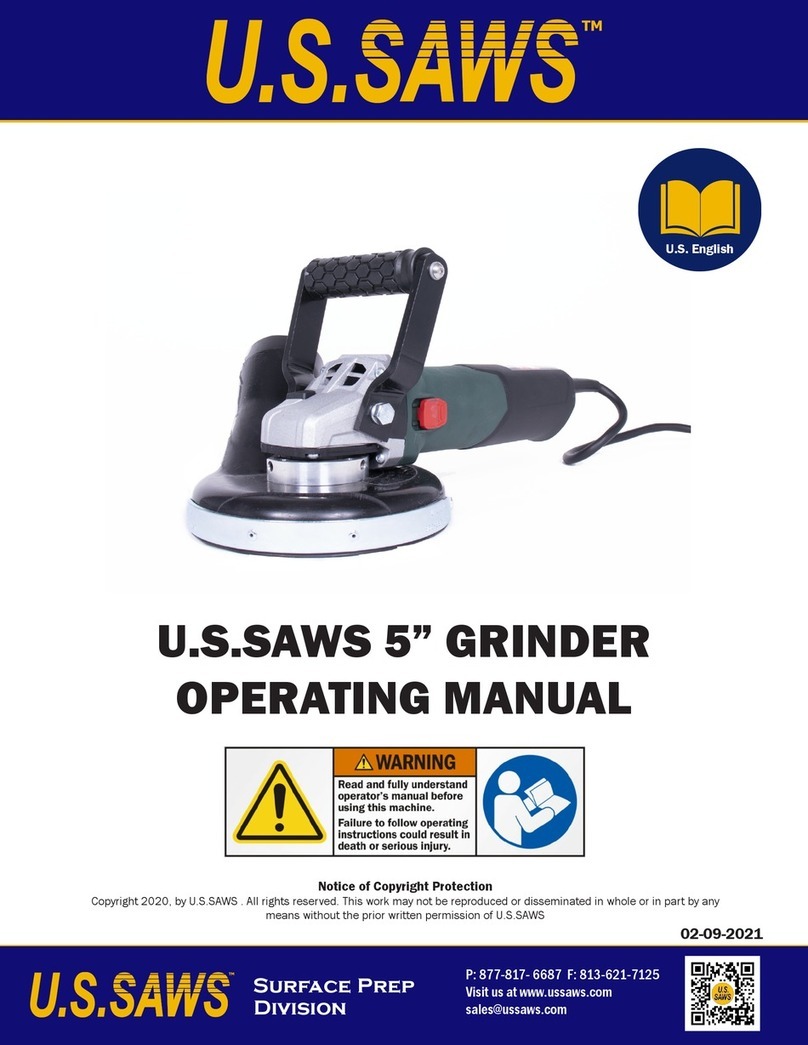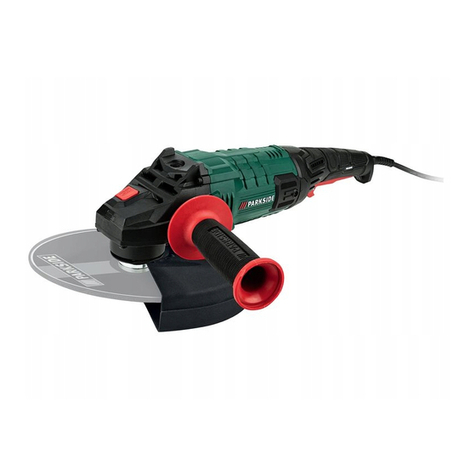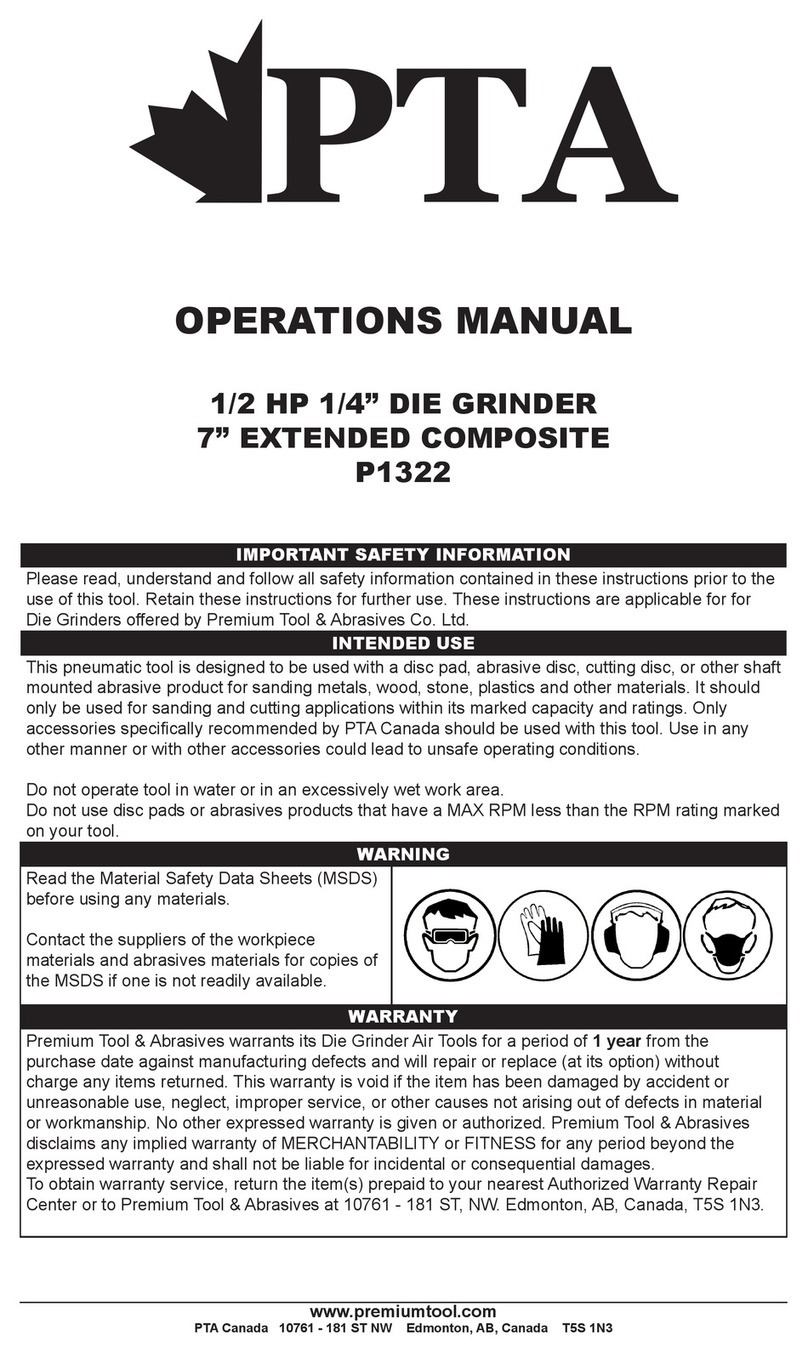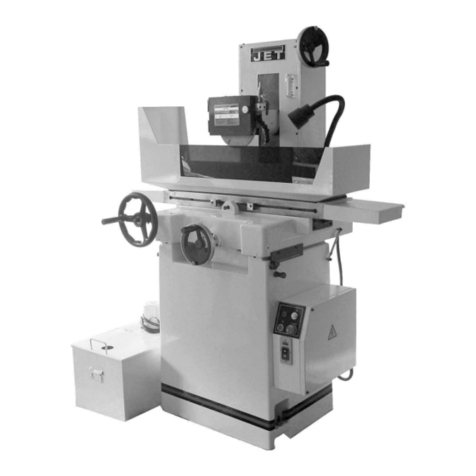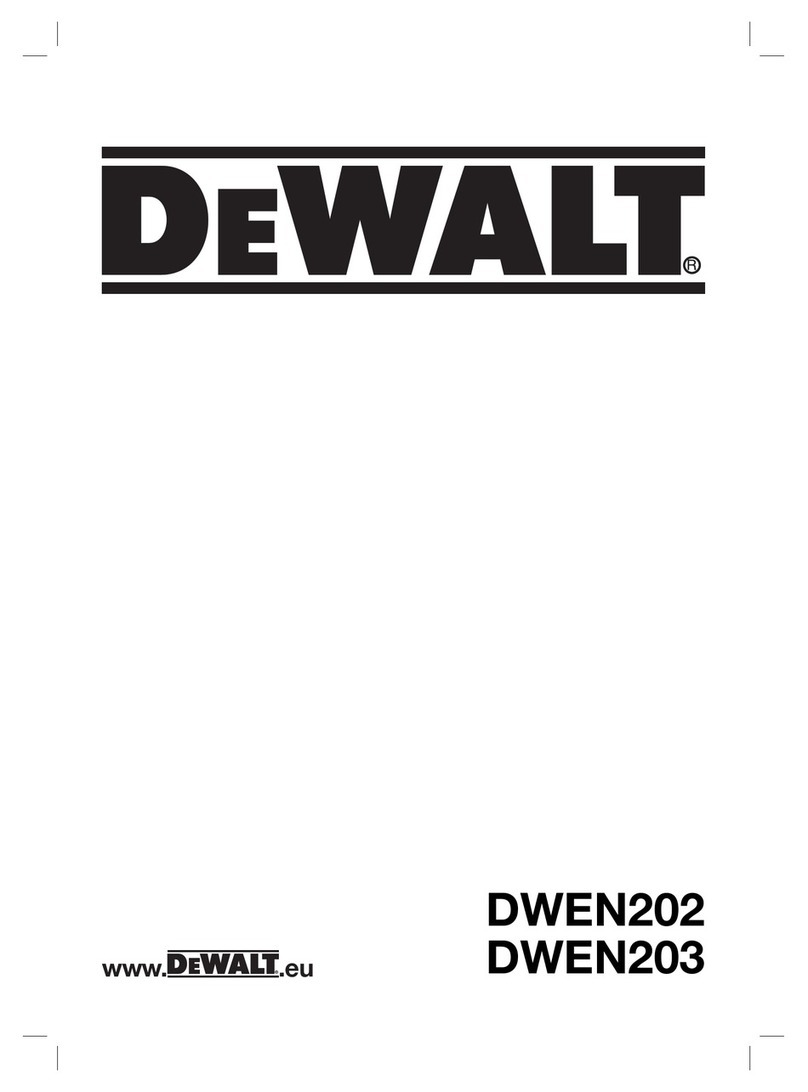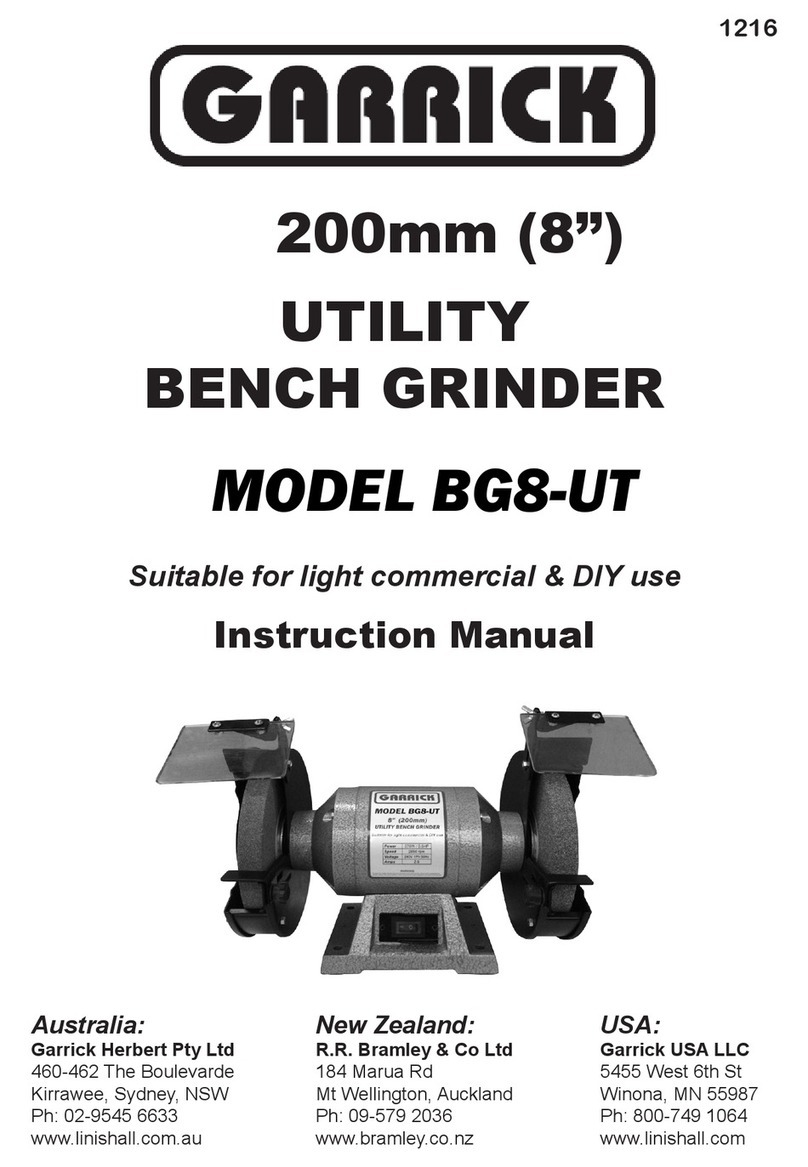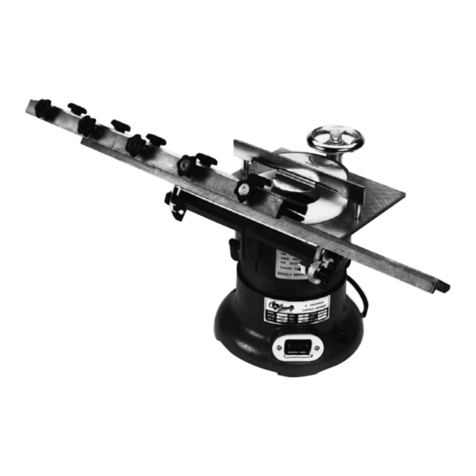
10 ENGLISH
2. Never place your hand near the rotating acces-
sory.
3. Do not position your body in the area where
power tool will move if kickback occurs.
to the wheel’s movement at the point of snagging.
4.
Use special care when working corners, sharp edges
etc. Avoid bouncing and snagging the accessory.
5. Do not attach a saw chain woodcarving blade
or toothed saw blade.-
1. Use only wheel types that are recommended
designed for the selected wheel. Wheels for
2.
The grinding surface of centre depressed wheels
must be mounted below the plane of the guard lip.
3.
The guard must be securely attached to the
power tool and positioned for maximum safety,
so the least amount of wheel is exposed towards
the operator. The guard helps to protect the operator
wheel and sparks that could ignite clothing.
4.
Wheels must be used only for recommended
applications. For example: do not grind with the
intended for peripheral grinding, side forces applied
to these wheels may cause them to shatter.
5.
correct size and shape for your selected wheel.
6. Do not use worn down wheels from larger
power tools. Wheel intended for larger power tool
1.
pressure. Do not attempt to make an excessive depth
of cut. Overstressing the wheel increases the loading
2. Do not position your body in line with and
behind the rotating wheel. When the wheel, at
the point of operation, is moving away from your
-
ning wheel and the power tool directly at you.
3. When wheel is binding or when interrupting
tool and hold the power tool motionless until
the wheel comes to a complete stop. Never
cut while the wheel is in motion otherwise
kickback may occur. Investigate and take correc-
4.
Do not restart the cutting operation in the work-
piece. Let the wheel reach full speed and carefully
re-enter the cut.
5. Support panels or any oversized workpiece to
minimize the risk of wheel pinching and kick-
back. Large workpieces tend to sag under their
workpiece near the line of cut and near the edge
6. Use extra caution when making a “pocket cut”
into existing walls or other blind areas. The
protruding wheel may cut gas or water pipes, elec-
1. Do not use excessively oversized sanding
disc paper. Follow manufacturers recommen-
dations, when selecting sanding paper. Larger
pad presents a laceration hazard and may cause
1. Be aware that wire bristles are thrown by the
brush even during ordinary operation. Do not
overstress the wires by applying excessive
load to the brush.
penetrate light clothing and/or skin.
2.
If the use of a guard is recommended for wire brush-
ing, do not allow any interference of the wire wheel or
brush with the guard.
in diameter due to work load and centrifugal forces.
Additional Safety Warnings:
1.
When using depressed centre grinding wheels,
2. NEVER USE Stone Cup type wheels with this
grinder. This grinder is not designed for these
types of wheels and the use of such a product
3. Be careful not to damage the spindle, the
lock nut. Damage to these parts could result in
wheel breakage.
4. Make sure the wheel is not contacting the
workpiece before the switch is turned on.
5.
Before using the tool on an actual workpiece, let it run
for a while. Watch for vibration or wobbling that could
indicate poor installation or a poorly balanced wheel.
6. -
form the grinding.
7. Do not leave the tool running. Operate the tool
only when hand-held.
8. Do not touch the workpiece immediately after
operation; it may be extremely hot and could
burn your skin.
9. Observe the instructions of the manufacturer
for correct mounting and use of wheels.
Handle and store wheels with care.
10. Do not use separate reducing bushings or
adaptors to adapt large hole abrasive wheels.
11.
12.
hole wheel, ensure that the thread in the wheel
is long enough to accept the spindle length.
